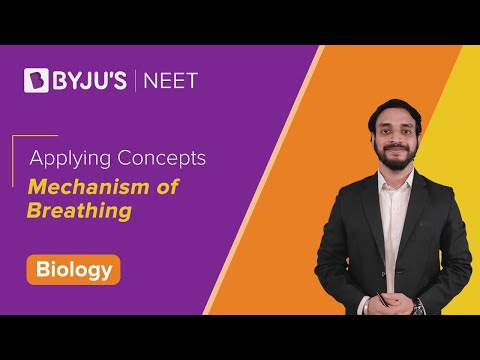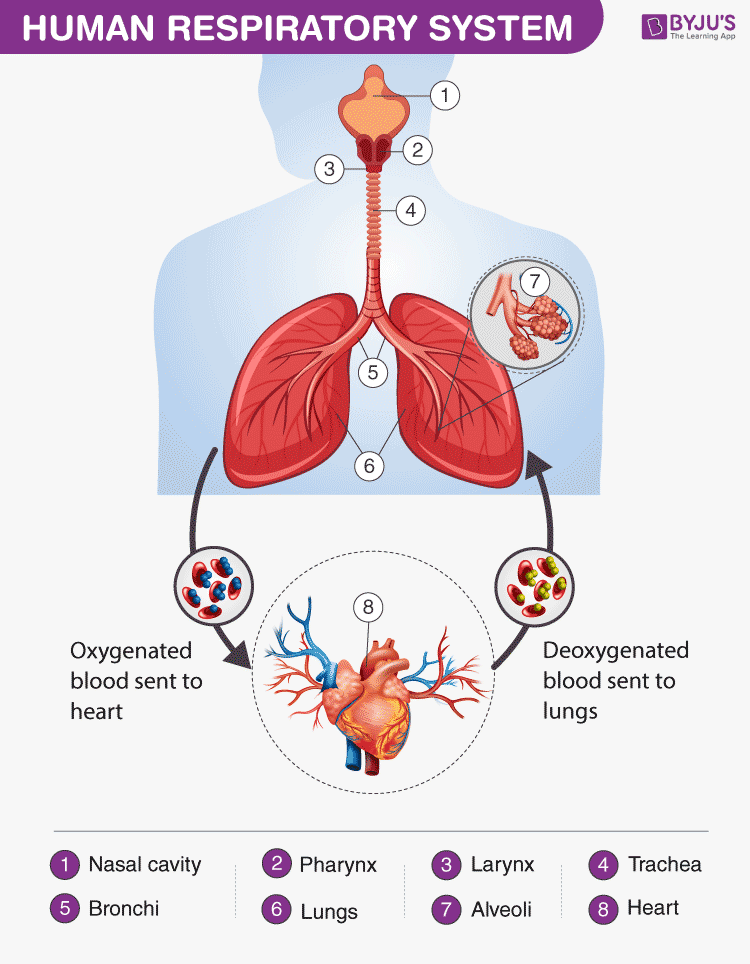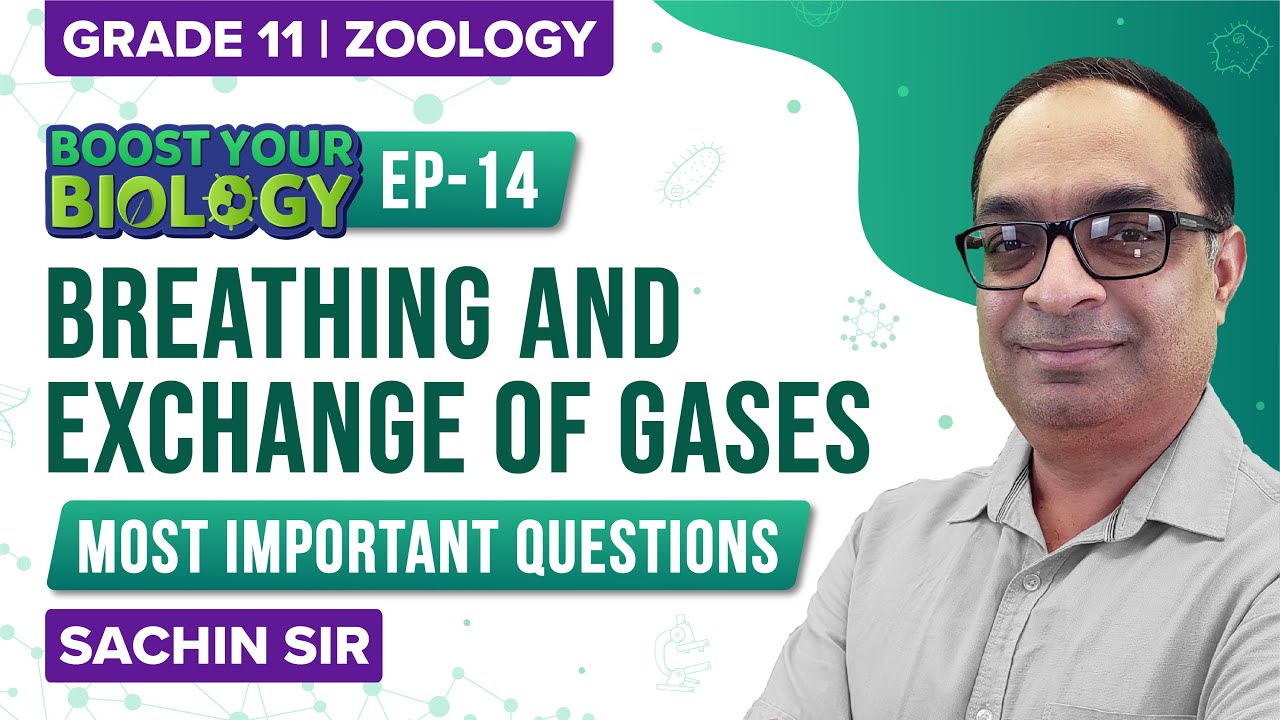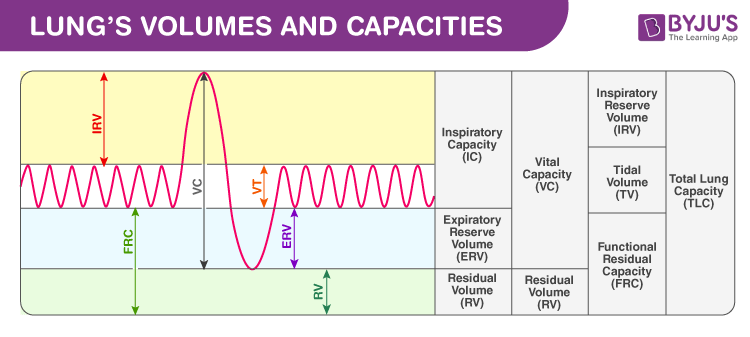Find below the important notes for the chapter, Breathing and Exchange of Gases, as per NEET Biology syllabus. This is helpful for aspirants of NEET and other exams during last-minute revision. Important notes for NEET Biology- Breathing and Exchange of Gases covers all the important topics and concepts useful for the exam. Check BYJU’S for the full set of important notes and study material for NEET Biology and solve the NEET Biology MCQs to check your understanding of the subject.
Download Complete Chapter Notes of Breathing and Exchange of Gases
Download Now
| Name of the NEET sub-section | Topic | Notes helpful for |
| Biology | Breathing and Exchange of Gases | NEET exams |
Breathing and Exchange of Gases – Important Points, Summary, Revision, Highlights
Human Respiratory SystemBreathing MechanismRespiratory VolumesGaseous ExchangeOxygen TransportCarbon dioxide TransportRegulationDisorders
Breathing and Exchange of Gases
We need energy to perform various activities. This energy is derived from the catabolism of various components of food, e.g. proteins, carbohydrates, fats, etc. Oxygen is required for catabolic processes and carbon dioxide is released in the process. So the body requires a continuous exchange of gases, oxygen from the atmosphere is taken inside and carbon dioxide produced is taken out. This process of gaseous exchange is called breathing or respiration.
All the animals have different organs specialised for the gaseous exchange.
| Mode of gaseous exchange | Respiratory organs | Examples |
| Cutaneous respiration | Skin | Through body surface- poriferans, coelenterates, flatworms
Moist cuticle- Earthworms Moist skin- Amphibians (frogs) |
| Tracheal | Spiracles | Arthropods (cockroaches) |
| Branchial respiration | Gills | Aquatic animals- arthropods, molluscs and fishes |
| Pulmonary respiration | Lungs | Terrestrial vertebrates including human |

Human Respiratory System
Conducting part of the respiratory system:
Nostrils → Pharynx (common passage for food and air) → Larynx (also called Soundbox, epiglottis prevents food from entering larynx) → Trachea (divides at 5th thoracic vertebra) → Primary Bronchi (Right and left) → Secondary and tertiary bronchi → Bronchioles (terminal)
Further reading: Pharynx Location
Bronchioles form many bag-like structures terminally, which are known as alveoli. Alveoli and alveolar ducts together take part in the exchange of gases.
Bronchi, bronchioles and alveoli together constitute a lung. Each lung is covered by the pleural membrane. It is a double-layered membrane, pleural fluid is present between the two layers, which reduces friction.
Lungs reside in the thoracic cavity, which is formed by the vertebral column (dorsal surface), sternum (ventral surface), ribs (present laterally) and diaphragm present at the lower side.
Don’t miss: NEET Weightage Biology

Process of respiration:
Pulmonary respiration (intake of atmospheric oxygen and release of CO2 rich alveolar air) → Diffusion of O2 and CO2 across the alveolar membrane → Transportation of gases by blood → Diffusion of O2 and CO2 between blood and tissues → Cellular respiration (catabolism of food using O2 to release energy and CO2)
Breathing Mechanism
Inspiration: Atmospheric air is taken inside due to lower intrapulmonary pressure. The pulmonary volume is increased due to the contraction of the diaphragm and intercostal muscles. Ribs and sternum lift up and the air moves into the lungs.
Expiration: Alveolar air is expelled out due to high intrapulmonary pressure as compared to atmospheric pressure. The pressure increases with the relaxation of the diaphragm and intercostal muscles. Ribs, sternum and the diaphragm return to their normal positions.
Inspiration and expiration volume can be increased by the help of muscles in the abdomen. Normal breathing rate is 12-16 times/ minute.
Spirometer- An apparatus for measuring the volume of inhaled and exhaled air.
Respiratory Volumes and Capacities
Tidal volume (TV)- 500 ml, the volume of air inspired or expired normally
Inspiratory reserve volume (IRV)- 2500 to 3000 ml, additional air by forcible inspiration. This along with the tidal volume makes Inspiratory Capacity (IC), i.e. TV + IRV
Expiratory reserve volume (ERV)- 1000 to 1100 ml, additional air by forcible expiration. This along with the tidal volume makes Expiratory Capacity (EC), i.e. TV + ERV
Residual volume (RV)- 1100 to 1200 ml, the air in the lungs after forcible expiration. Residual volume and ERV together represent Functional residual capacity (FRC), i.e. the air remaining in the lungs after normal expiration (ERV + RV)
Vital capacity (VC)- the maximum volume of air that can be breathed in or out after forced expiration or inspiration (IRV + ERV + TV)
Total Lung capacity (TLC)- VC + RV
Exchange of Gases
Exchange of gases is across pressure/ concentration gradient. Exchange of gases occurs between alveoli and blood and between blood and tissues.
The difference in the partial pressure of CO2 (pCO2) and O2 (pO2) in alveolar tissues, blood and other body tissues, results in diffusion of gases across membranes
Oxygen Transport
O2 is transported through the blood. 97% of oxygen is carried by RBCs and 3% dissolved in plasma.
Each Haemoglobin molecule can bind to 4 molecules of oxygen forming oxyhaemoglobin. In the alveoli, oxyhaemoglobin formation is favoured due to higher pO2 and low pCO2 and H+ concentration. The Oxygen dissociation curve is sigmoid.
In tissues, oxyhaemoglobin dissociates due to low pO2
Carbon dioxide Transport
CO2 is transported through the blood by the formation of carbaminohemoglobin. 20-25% of CO2 is transported this way, 70% as bicarbonate and 7% as dissolved in plasma.
When there is high pCO2 and low pO2, CO2 binding to Hb is preferred. Enzyme carbonic anhydrase, present in RBCs facilitates the transportation of CO2.
CO2 gets diffused to the blood from tissues as there is a high concentration of CO2 in tissues due to catabolic activity. The CO2 forms HCO3– and H+.
In alveolar tissue, pCO2 is low so bicarbonate is converted to CO2 and H2O.
Carbonic anhydrase catalyses both the reactions
CO2 + H2O ⇄ H2CO3 ⇄ HCO3– + H+
Regulation of Respiration
The respiratory rhythm centre (medulla region) and pneumotaxic centre (pons region) regulate the respiration activity according to the demand.
Disorders Of Respiratory System
Asthma: It is caused due to inflammation in the respiratory tract. Symptoms include wheezing and difficulty in breathing.
Emphysema: It is caused due to damage in alveolar walls. Smoking is one of the major causes of the condition. There is shortness of breath even at rest.
Occupational respiratory disorder: Workers, who are exposed to a lot of dust are prone to get long term inflammation and leading to fibrosis and lung damage.
Explore the next chapter for important points with regards to the NEET exam only at BYJU’S. Check the NEET Study Material for all the important concepts and related topics.
Recommended Video:

Also see:
Flashcards Of Biology For NEET Breathing And Exchange Of Gases
NEET Flashcards: Body Fluids And Circulation
NEET Flashcards: Excretory Products And Their Elimination
NEET Flashcards: Locomotion And Movement

Nice it’s really helpful for me
It is very useful for me to summarise the chapter but it is enough content for NEET examination.
This is very helpful for me
It was a good revision for me
thank you Byjus
These notes are amazing .
pyq for neet exam class 11 ncert based biology